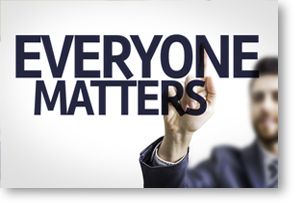I had the opportunity this week to attend a presentation by Assistant Secretary of Labor for Disability Policy, Kathleen Martinez, who leads the Department of Labor’s Office of Disability Employment Policy (ODEP).  The event was sponsored by the Kansas City Industry Liaison Group and the Business Leadership Network of Greater Kansas City. Martinez shared some valuable insight and information with us.
The event was sponsored by the Kansas City Industry Liaison Group and the Business Leadership Network of Greater Kansas City. Martinez shared some valuable insight and information with us.
She began by talking about the Kansas City Royals and the World Series—a strange topic for someone who grew up near San Francisco. However, she stated sports are a cultural force that bring people together and shapes cultural attitudes. In doing so, sports has created defining moments for Individuals with Disabilities (IWDs). One example is a recent public service announcement (PSA) released by the Professional Baseball Athletic Trainers Society (PBATS). This PSA features Curtis Pride, a former Major League player who was born deaf.
Assistant Secretary Martinez also mentioned another PSA called Who I Am that debuted during National Disability Employment month in October. The video features several IWDs who are not defined by their disabilities. The video can be found on the website for The Campaign for Disability Employment—a collaborative effort involving several disability and business organizations that seek to promote positive employment outcomes for people with disabilities. She also mentioned other sports figures such as Derrick Coleman of the Seattle Seahawks, who has been deaf since the age of three, and Tomas Dempsey, former AFL place kicker who was born without toes on his right foot and no fingers on his right hand.
Martinez mentioned many of the inquiries from employers are still centered on the how of compliance. Employers and employees are afraid to say or do the wrong thing. There are a lot of social concerns about disability etiquette and they do not want to make mistakes. The answers still point to establishing a culture of inclusion so people feel safe identifying as an IWD. Some employers have started Employee Resource Groups (ERG) or affinity groups focused on disability. These ERGs are open to anyone dealing with disability—not only employees with evident disabilities but also parents of disabled children or employees with aging or disabled parents. Such groups promote peer-to-peer support around disability issues. Early feedback suggests this has a positive impact on creating a disability friendly culture.
"The answers still point to establishing a culture of inclusion so individuals with disabilities feel safe self-identifying."
The Assistant Secretary also talked about the tsunami of older workers present in today’s workplace as baby boomers age. This group may go in and out of disability status. There are also employees with disabled family members. Her suggestion to employers is to make disability a part of standard operating procedure. Disability Awareness Month should be year round.
Disability in the workplace still seems to be a policy driven movement rather than an economically driven movement, but that is beginning to shift. Some companies have brought disability and accessibility into their advertising or product development. She referenced Apple’s design for the iPhone as an accessible product designed from the beginning—accessibility is baked in rather than layered on later. Accessibility benefits everyone, making things easier or more efficient for those with and without disabilities. One example is curb cuts and ramps. There was much resistance to the idea of removing curbs where the sidewalk ends at a street corner and replacing them with a short ramp from sidewalk to street level. But now, who uses the ramp? Everyone! Think about how much easier it is when using a stroller or bicycle. I think about curb cuts when I travel and I am pulling my heavy (over-packed) suitcase behind.
All of this increased effort is great, but one of the overwhelming questions for employers is, “Where do I find qualified individuals with disabilities?” There are a number of local, as well as national, initiatives springing up all over the nation. ODEP has the Workforce Recruitment Program for College Students with Disabilities (WRP). WRP is a recruitment and referral program that connects federal and private sector employers nationwide with highly motivated college students and recent graduates. Martinez also mentioned www.askearn.org as a resource for recruitment, hiring, and retention information. Find community resource information on their Community Resource Linkage page. OFCCP also has a Disability and Veterans Community Resources Directory. It will take time and effort for employers to seek out the best sources for their needs. If you do not know where to turn, use these resources to get started.
Assistant Secretary Martinez ended her comments by saying disability employment is a multi-faceted issue that requires a multi-faceted approach. There are IWDs that can work, want to work, and deserve to work. They want to make choices, be independent, and be self-sufficient.
-1.png)

.png?width=593&name=MicrosoftTeams-image%20(4).png)